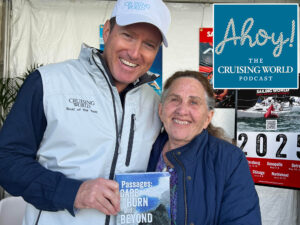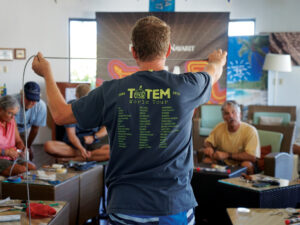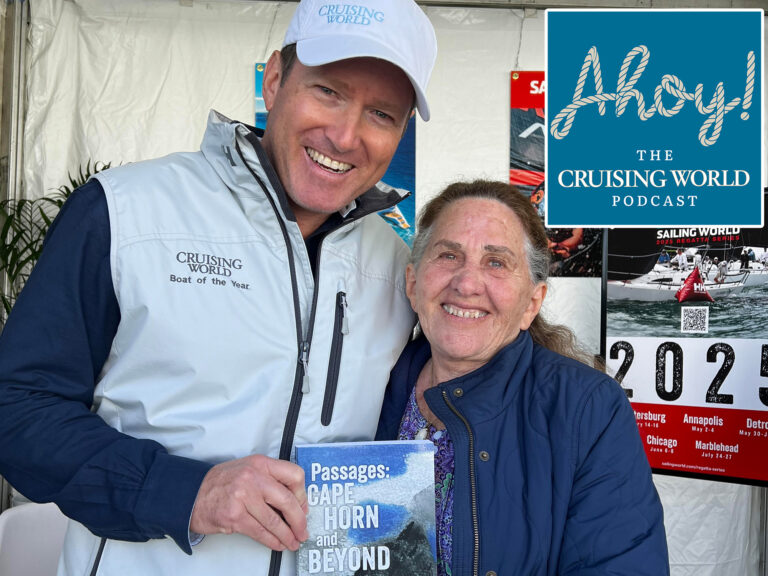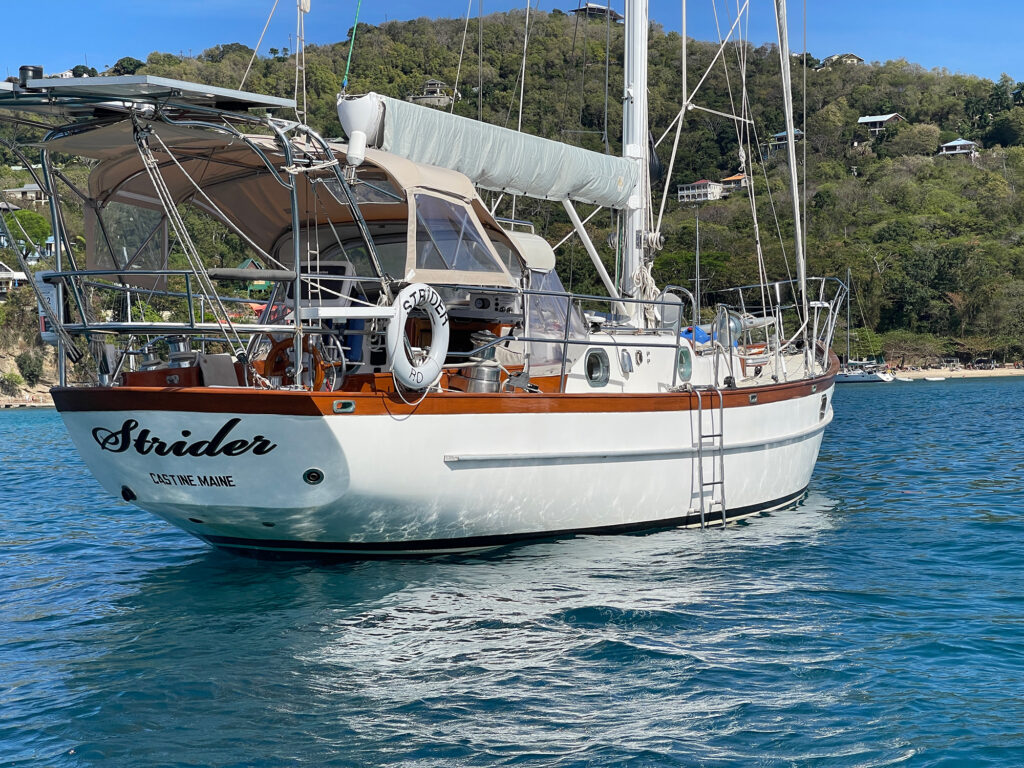
Sailing my Lord Nelson 41, Afaran, from Maine down to the Caribbean each November and back again in May, my sole companion was the renowned French chef Pierre Franey—or rather his cookbook: The New York Times 60-Minute Gourmet. It’s more a storybook about food and the traditions of dining than just a collection of recipes. But Pierre’s book delivers on those too—each dish takes no more than 60 minutes to prepare.
The 60-Minute Gourmet was, and still is, a joy to read. It would occupy a good part of an afternoon watch as I scoured the pages for something to make for my solo dinner. What did I have aboard that could be adapted to one of his recipes?
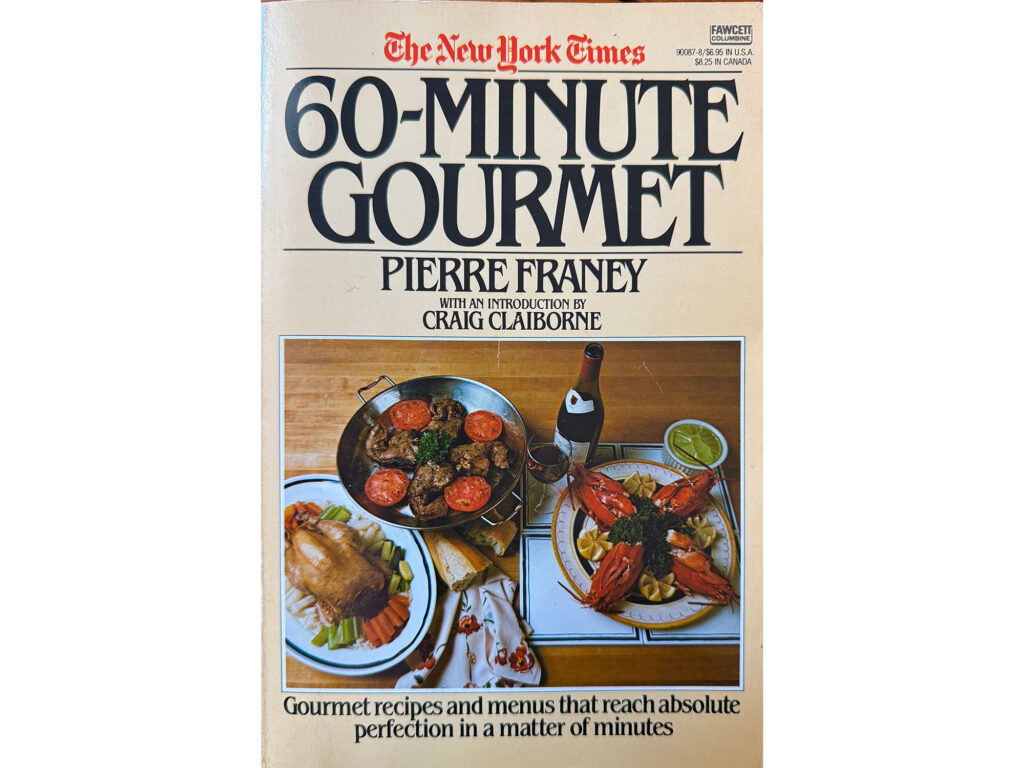
Pierre came to New York City in the 1930s, a young French-trained chef, and ended up as executive chef at Le Pavillon. Soon after, he began writing a weekly column for The Times, which led to a collaboration with food critic Craig Claiborne on 10 cookbooks.
This famous chef helped me become more creative in the galley—and more resourceful. If I didn’t have cognac aboard, maybe a splash of rum would do. His Chicken Breasts Veronique with Curried Rice might become White Fish Veronique with garlic mashed potatoes. Out there in the middle of the Atlantic, 350 miles from the nearest market, I was forced to adapt and experiment. That led to many great discoveries—and a few disasters—but since I was alone, no one complained. I was building creativity and expanding my repertoire.
Meal preparation, I realized, can be a creative endeavor, like writing. You combine ingredients—or ideas—to create something whole. And if you do it well, your audience devours what you’ve made.
Few joys in life are better.
Another sailor/chef I’ve sailed with also imparted valuable lessons. Larry Taylor is a storyteller, yacht skipper, and hotel-trained chef. He’s been chartering The Dove, his 54-foot Crealock-designed sloop, in the Caribbean for more than 30 seasons, with side trips to Antarctica (twice) and Greenland (twice). He serves dinners aboard that rival any four-star restaurant ashore.
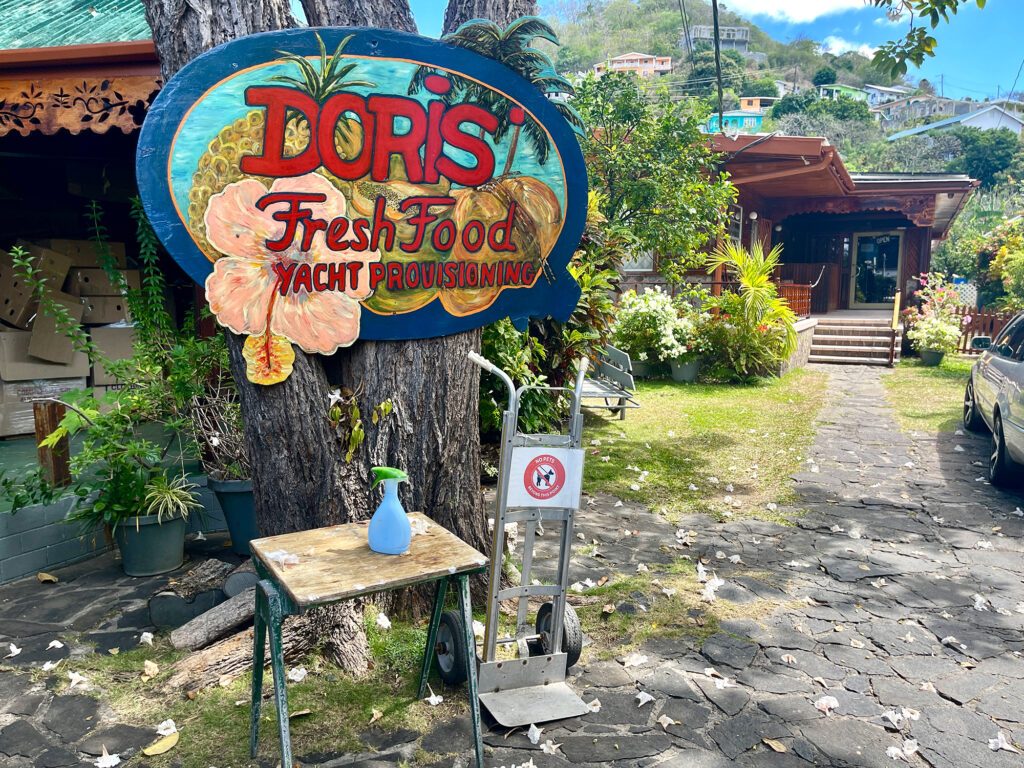
“Don’t scrape the chopped vegetables off the board with the sharp side of your knife,” he once told me, slapping the back of my head. “That’ll teach you. Same lesson my instructor gave me in hotel school. Use the back side of the knife. The knife is your best friend in the kitchen. Treat it with respect.”
That advice replays in my head every time I scrape chopped onions into a skillet.
I learned breadmaking from Larry. When I asked him for a recipe, he said he didn’t have one. “I’ve done this so many times, it just comes naturally.” Another Larry lesson: use real charcoal in the grill, not briquettes. It makes a difference—whether you’re cooking leg of lamb, mahi-mahi, or burgers. Finding real charcoal in the islands isn’t hard; most locals use the real stuff.
Julia Child’s Mastering the Art of French Cooking is a good read, but her recipes are all-day affairs—and not well suited to the cramped confines of a boat’s galley.
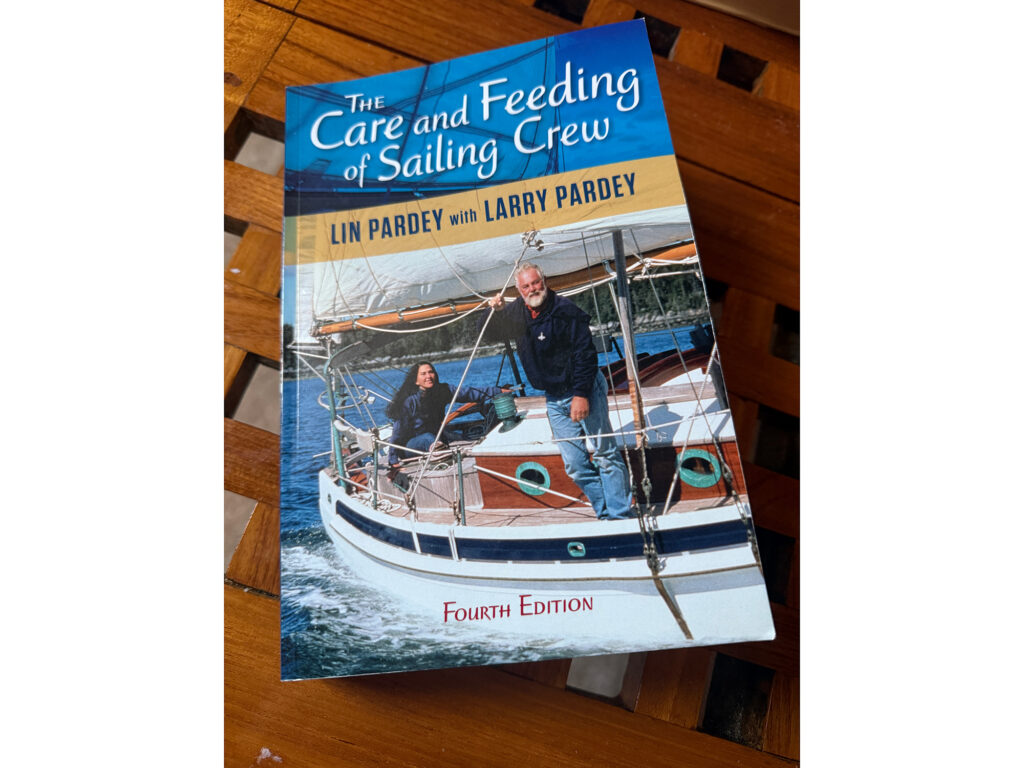
I do keep a copy of Lin and Larry Pardey’s 400-plus-page book, The Care and Feeding of the Sailing Crew. It’s not just another cookbook—it’s a complete guide to how food fits into every voyage, from provisioning and meal planning to food storage, told with authority. The Pardeys circumnavigated the globe twice on small, engineless boats they built themselves—and authored eight more books along the way.
“Necessity is the mother of invention.”
Bequia to Carriacou on Strider
Meal prep is hard enough in a small boat’s galley. Add in limited provisioning ashore, and the cook’s creativity is really tested.
“What’s in there?” I asked Richard, who was half buried inside the freezer chest at Knight’s Market in Port Elizabeth, on Bequia.
“Frozen pork chops and some chicken legs,” he mumbled.
“No hamburger?”
He didn’t answer but emerged with two packets of frozen chicken and two of pork chops.
“These’ll have to do,” he said. “That’ll give us dinner for four nights.”
Richard and I were provisioning for a sail down to Tobago Cays and Carriacou. He’d been sailing his 44-foot Reliant sloop, Strider, south through the islands most of the 2024 season, solo. I’d flown down to help him sail back north to Antigua for the Classic Yacht Regatta in late April.
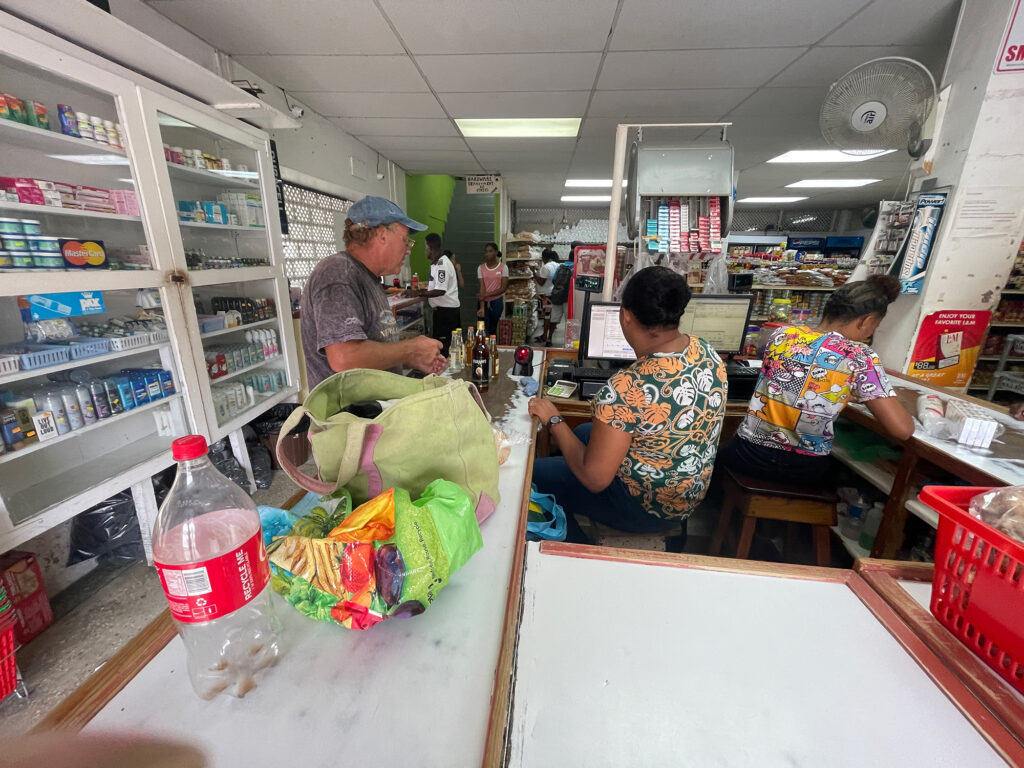
Provisioning a yacht in the Caribbean can frustrating and expensive. In some places, you might visit three or four small markets and still only find half of what you want. The rule here: forget the shopping list. Go ashore, see what’s available, then decide what’s for dinner once you’re back aboard.
These islands are the last stop in a long supply chain. Islanders make do with what’s available. Most West Indian meals are little more than rice and black beans.
Thankfully, there’s no shortage of fresh fruits and vegetables. Much of it is locally grown, and the rest arrives daily from larger islands. You’ll find a dozen fruit and vegetable stands on the streets of Port Elizabeth, some little more than a card table with pineapple, coconut, papaya, mango (in season), and pumpkin. Others have crates of produce.
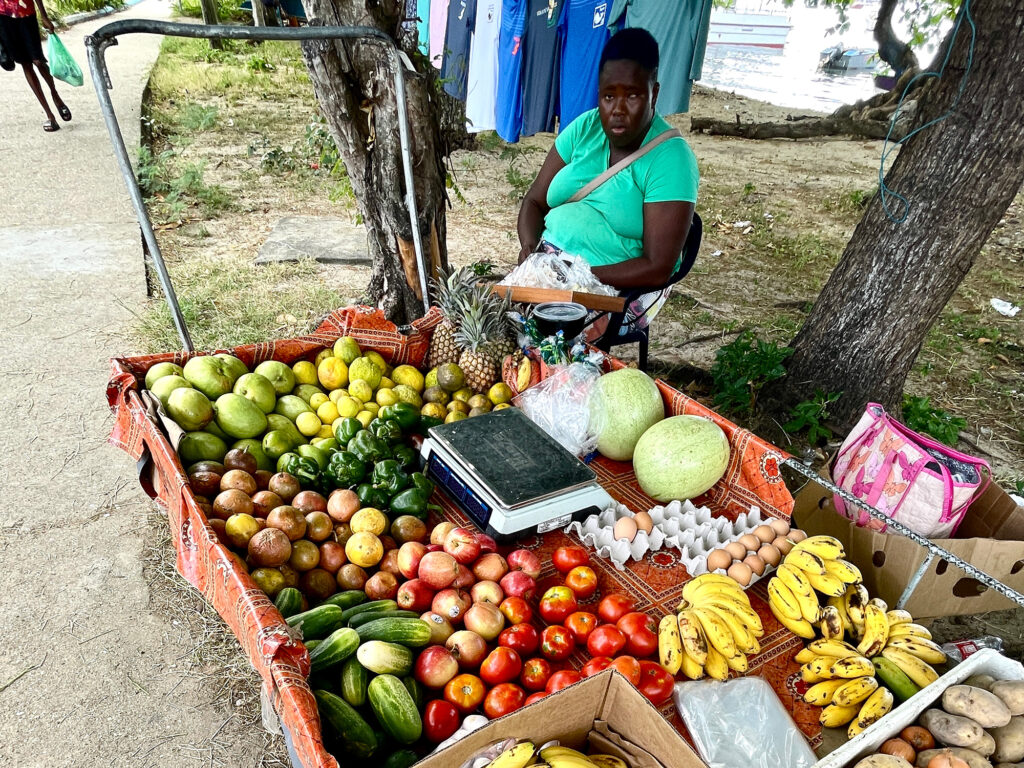
Ten years ago, the open-air market near the fish dock was bustling. Last year, only one vendor was there. The others must have realized they could skip the rental fees and set up on the street instead.
On Back Street, Doris’ Fresh Food and Yacht Provisioning is a small, air-conditioned gourmet market with a lot of high-end groceries. She’s been there for decades, catering to on-island expats and visiting superyachts.
At Knight’s, we bought the basics: rum, tonic water, fruit juice (for rum punch), rice, canned tomatoes and beans, cereal, eggs, and whatever frozen meat we could find. They took my credit card. The fruit stand vendors, though, needed cash. We filled canvas bags with pineapple, bananas, nutmeg (for the rum punch), garlic, onions, peppers, potatoes, and mangoes. That would hold us for the week.

It took the better part of a day to sail south from Bequia to the Tobago Cays. By 4 p.m., we picked up a mooring in Clifton Harbor on Union Island. We’d leave the Grenadines tomorrow, bound for Carriacou, but first we’d clear out in the morning.
Late afternoon, time for a rum punch. Reclined on cockpit cushions, we sipped and watched the harbor unwind.
“What do you think we should do with two of those chicken legs?” Richard asked. He’d had enough of his own cooking and wanted fresh input.
“That large cast-iron skillet down there would be perfect for Chicken Cacciatore,” I said.
Richard and I are both one-pot sailors. Anything that can be cooked in a single pot or skillet is on the menu.
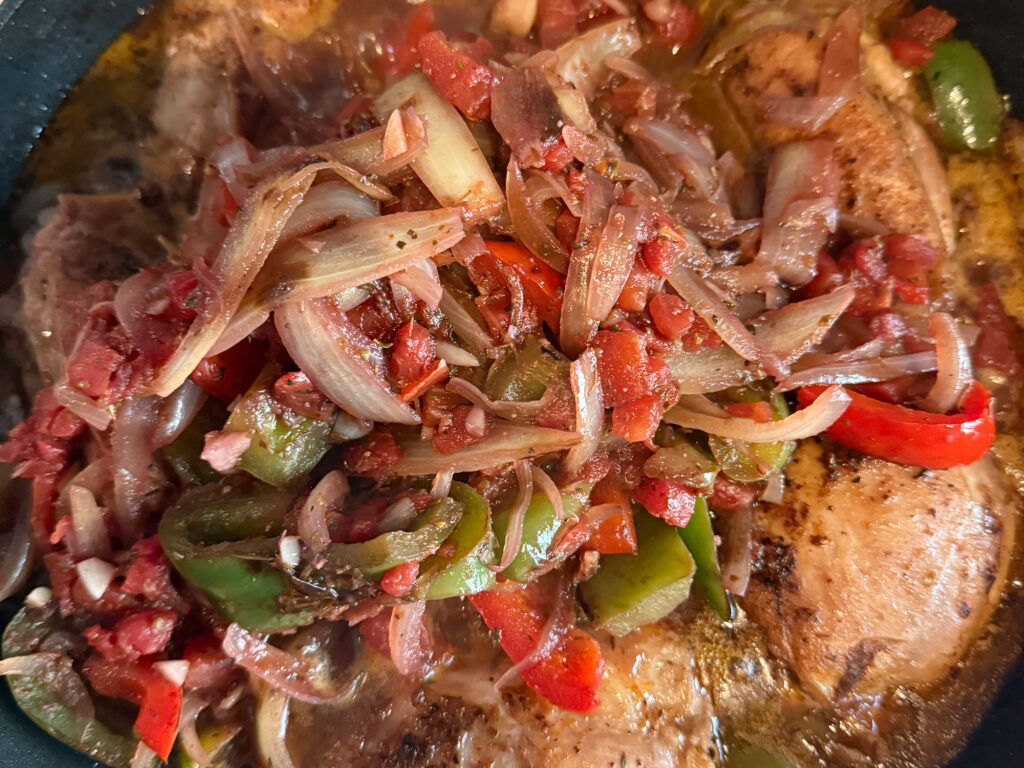
“Take that cast-iron skillet and cook the chicken. While that’s going, chop up an onion, two peppers, and some garlic. When the chicken’s done, take it out and sauté the vegetables in the same skillet. Boil up two cups of chicken bouillon. When the veggies are done, throw in two cups of that pineapple I cut up. It’ll give it a Caribbean twist. Add the chicken back in, pour in the broth, and let the whole thing simmer.”
No need for specifics. Richard knew how to cook—he just needed the idea.
“A splash of rum?” he asked.
“Can’t hurt.”


